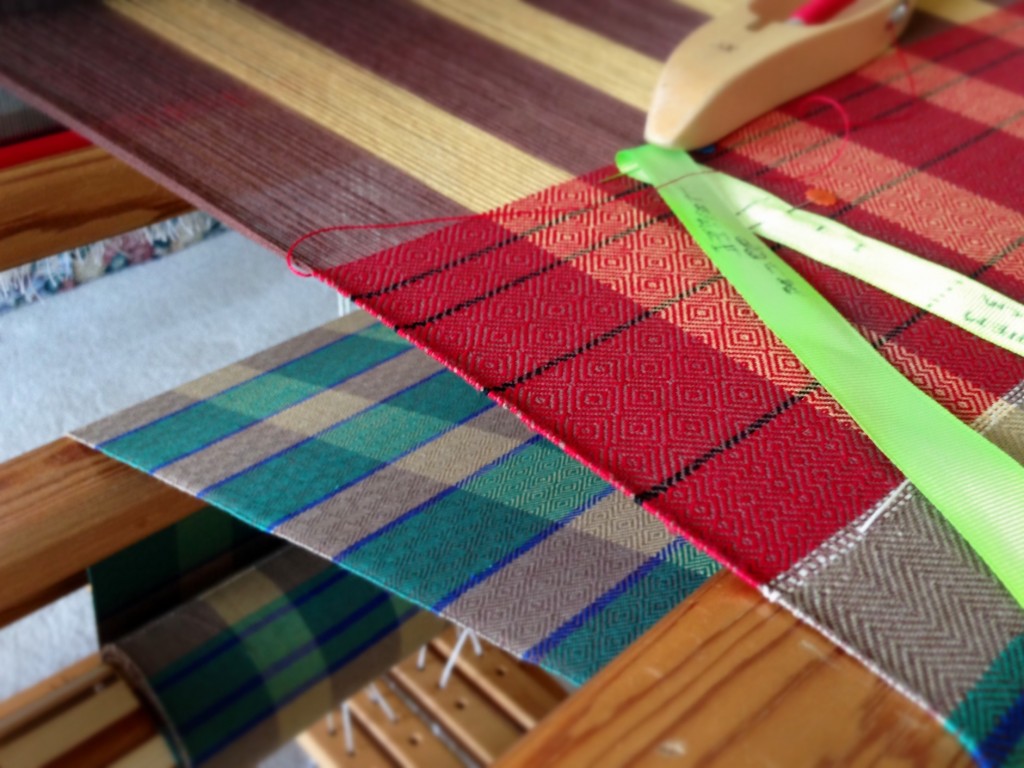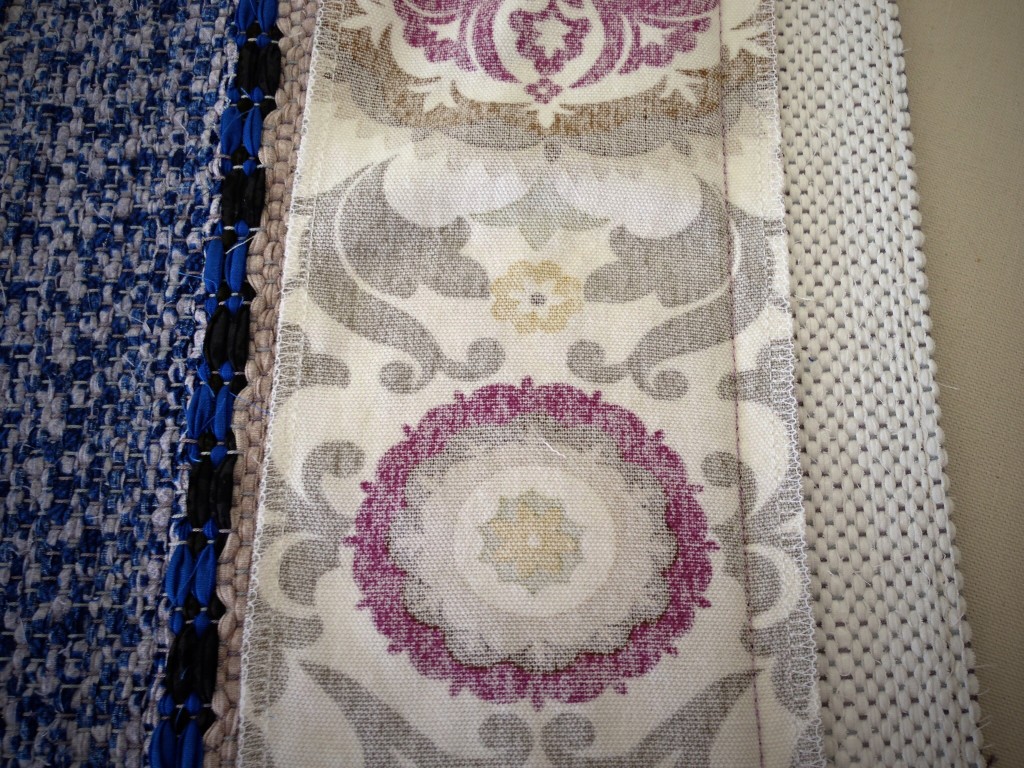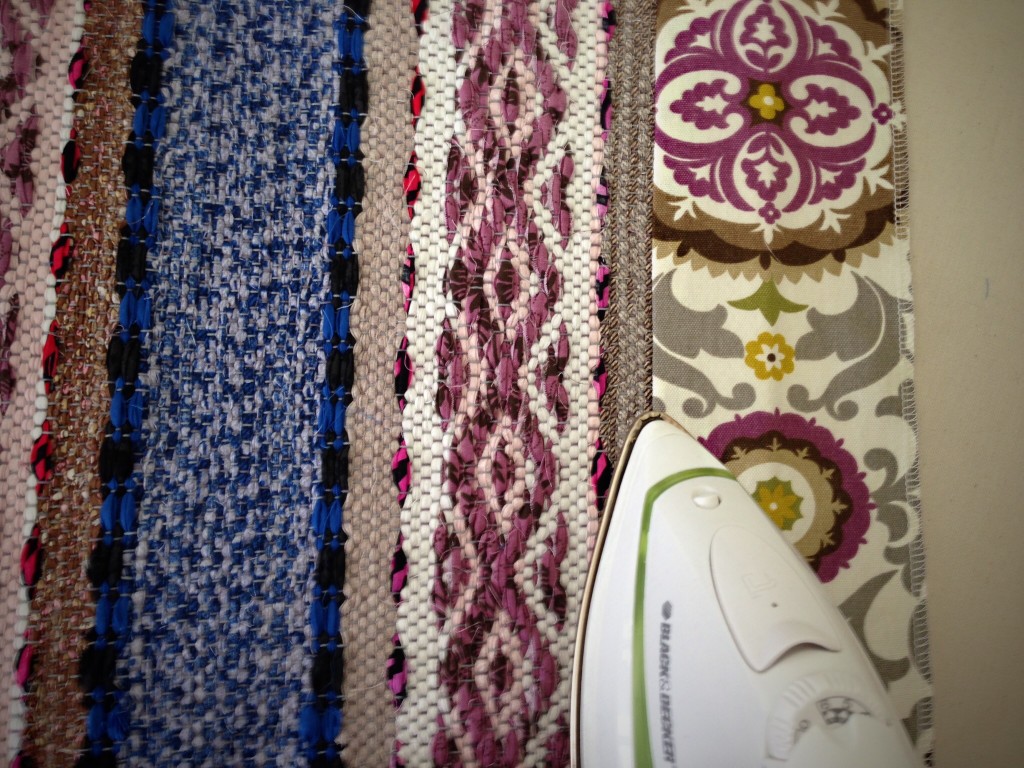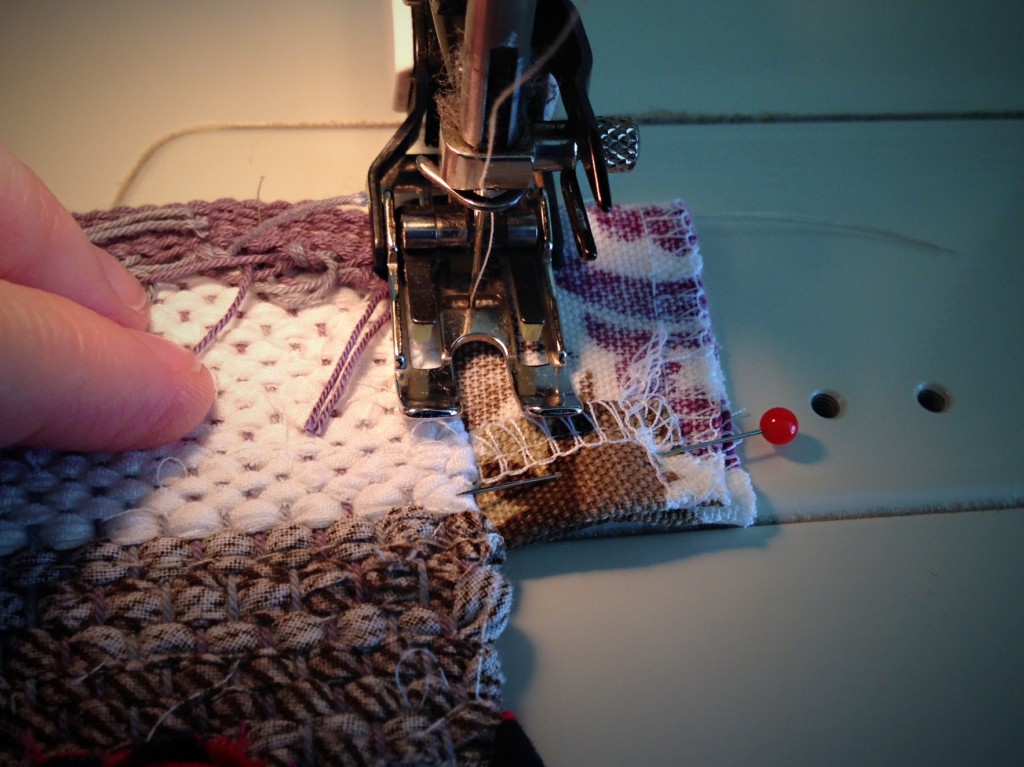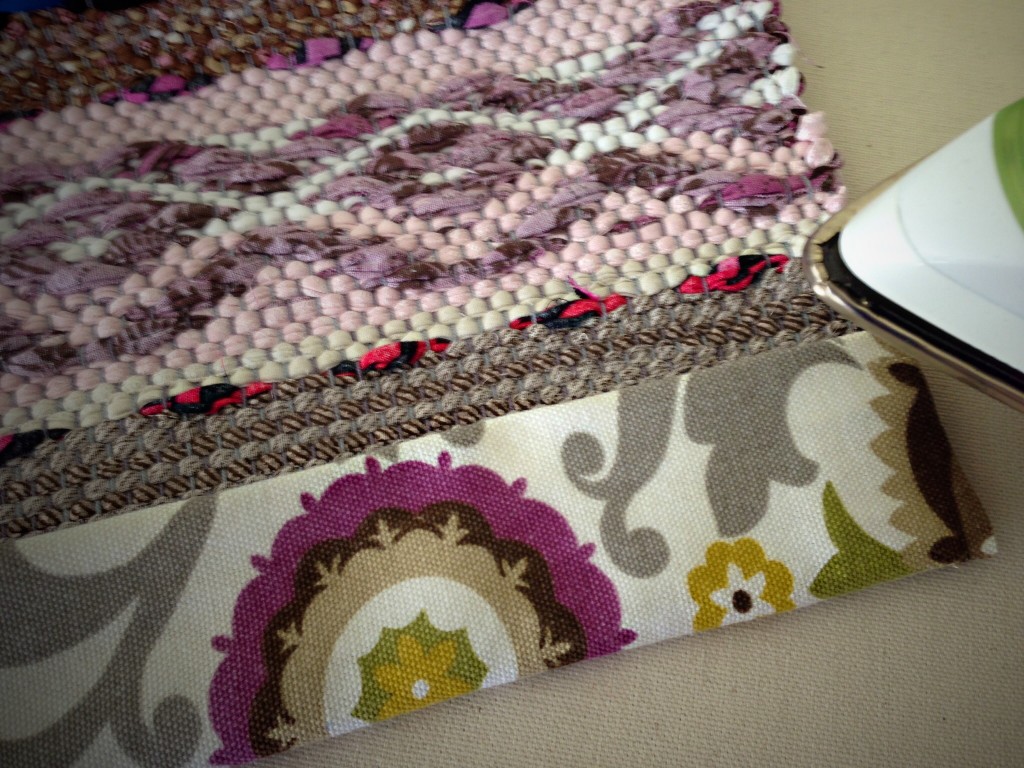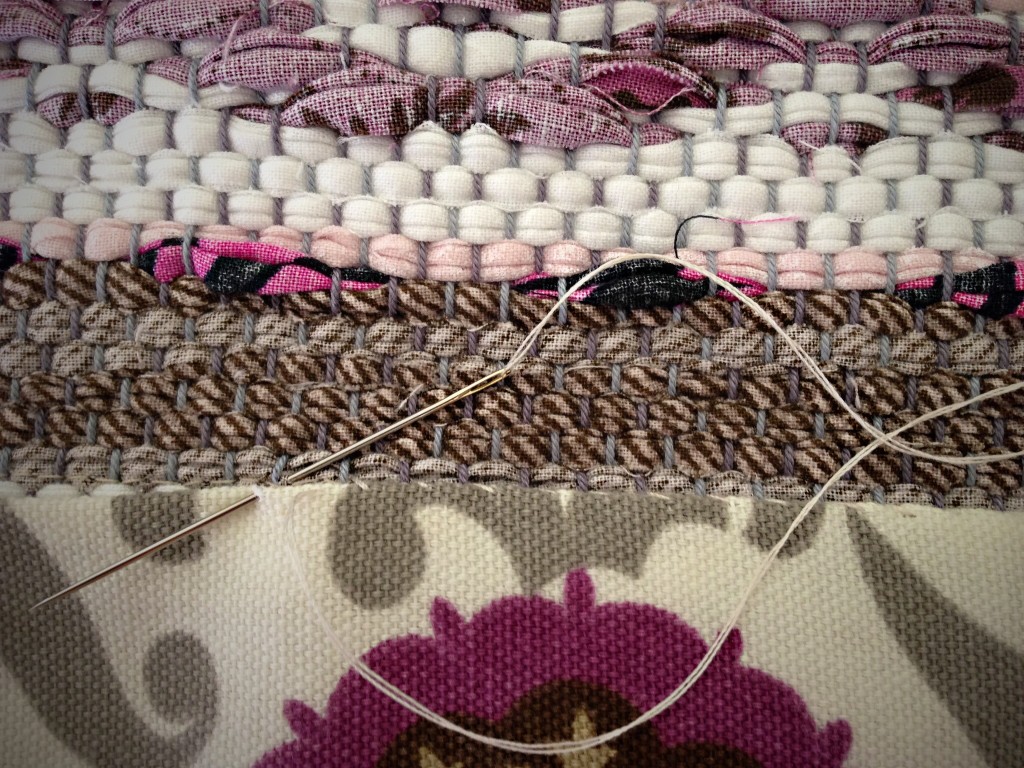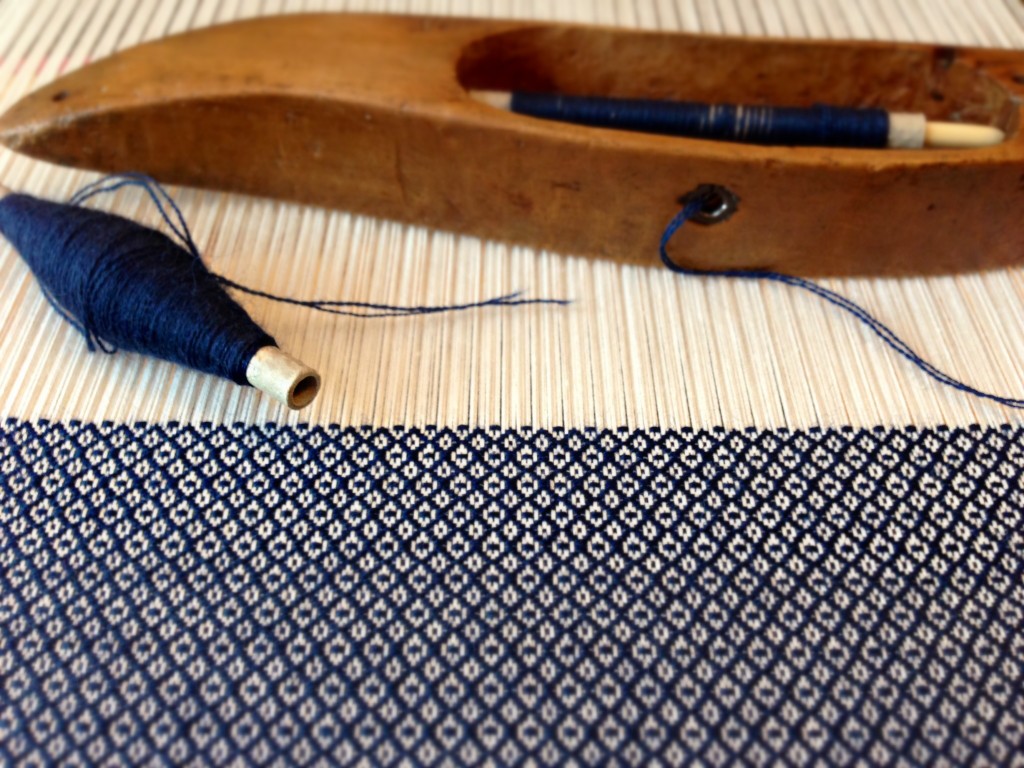Though barely seen, they are a deciding factor in the success of this fabric. Skinny little threads. There is a big contrast between the thick and the thin threads in this fascinating two-treadle weave. The thread size difference creates abundant pattern possibilities. Very thin 30/2 cotton almost disappears while it outlines the thick threads, doubled 22/2 cottolin. I change blocks by simply throwing two thin picks in a row.

Most of my errors have to do with the thin thread. Either omitting a pick, or forgetting the second pick to change blocks. After weaving a bit further, the error becomes apparent. I go back, take the error out, and weave it over. All because that barely seen thin thread didn’t get put in place.
Forgiveness, an act of humility, is an essential element of each day. Thin threads that take their place in our daily interactions. Not necessarily spoken, but something in your heart that turns your attitude in the right direction. The forgiven forgive. Those who have been forgiven know how to forgive others. So, maybe a chain reaction starts when we forgive. We can hope so.
May your thin threads be strong.
Forgiven,
Karen

